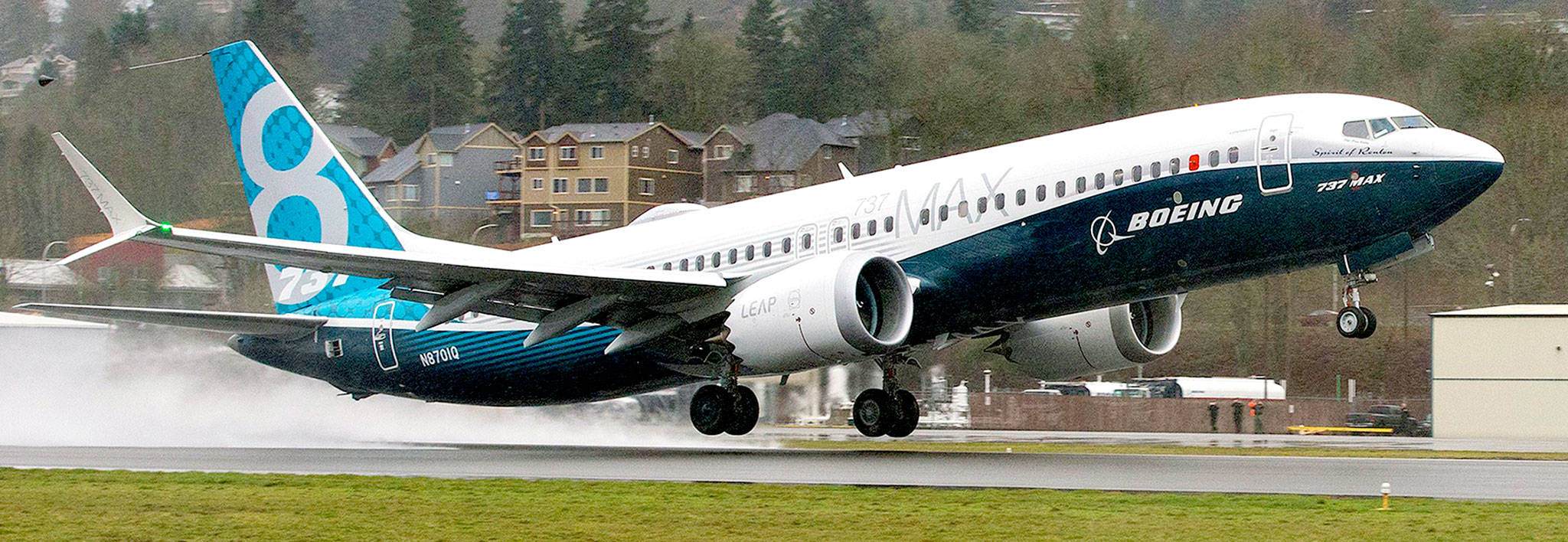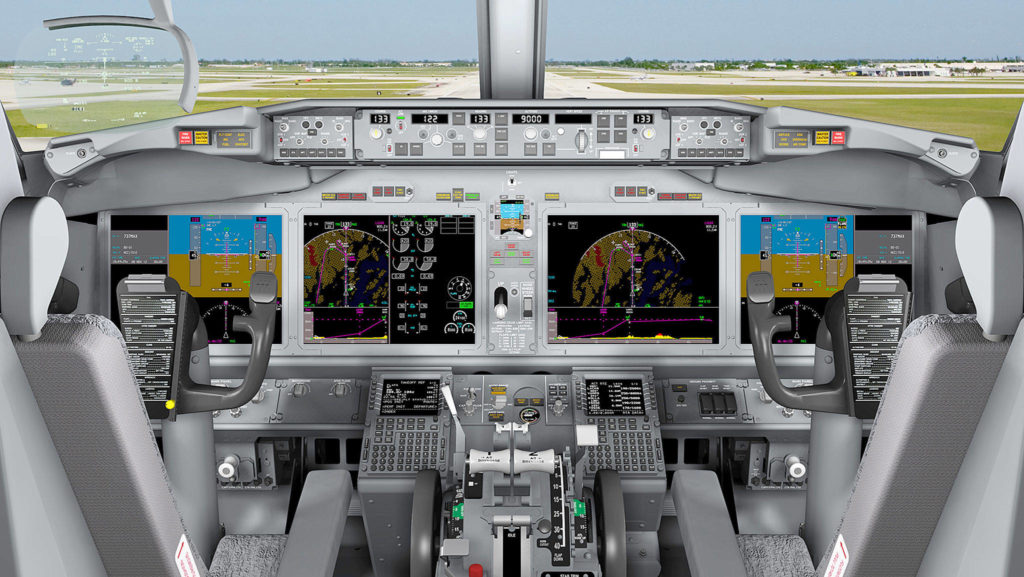By Dominic Gates / The Seattle Times
In his opening statement Wednesday at the House Aviation subcommittee hearing in Washington, D.C., on the Boeing 737 Max, the lead Republican congressman blamed errors by the Indonesian and Ethiopian pilots for the two deadly Max crashes in those countries.
“Pilots trained in the United States would have successfully been able to handle” the emergencies on both jets, said Rep. Sam Graves of Missouri, ranking member of the House Transportation and Infrastructure Committee. He added that preliminary reports about the accident “compound my concerns about quality training standards in other countries.”
Graves was repeating the main points in a report written by two pilots at a major U.S. airline that pointed to pilot error as “the most consequential factor” in both crashes. Their report was commissioned and paid for by institutional investors with large holdings in Boeing stock.
That case for pilot error as the major cause of the crashes seems close to a surrogate for what Boeing has only hinted at and may be a key part of the manufacturer’s legal defense in liability lawsuits.
Yet two flight-simulator sessions replicating the conditions on the doomed flights contradict Graves’ contention that better-trained pilots would have escaped disaster. And some Western-trained pilots criticize the report as based on unverified assumptions and minimizing the intense stress Boeing’s runaway flight-control system imposed on the two flight crews.
A good pilot on a bad day
“I’m disappointed with those who sit in their lofty chairs of judgment and say this wouldn’t have happened to U.S. pilots,” said a veteran captain with a major U.S. airline, who asked not to be named to avoid involving his employer.
The flight crew on the March 10 Ethiopian flight faced a barrage of alerts in the flight that lasted just 6 minutes. Those alerts included a “stick shaker” that noisily vibrated the pilot’s yoke throughout the flight, warning that the plane was in danger of an aerodynamic stall, which it wasn’t; repeated loud “DON’T SINK” warnings that the jet was too close to the ground; a “clacker” making a very loud clicking sound to signal the jet was going too fast; and multiple warning lights telling the crew the speed, altitude and other readings on their instruments were unreliable.
The Lion Air crash in October would have been at the forefront of the Ethiopian pilots’ minds, and they seem to have focused solely on following the Boeing procedure to disengage the Max model’s new flight-control system — the Maneuvering Characteristics Augmentation System (MCAS) — that was pushing the nose down.
They did so by flipping two cut-off switches. But then the heavy forces on the jet’s tail prevented them from moving the manually controlled wheel in the cockpit that would have corrected the nose-down attitude.
“What would the best pilot do on their worst day with all of this sensory overload?” the veteran U.S. airline captain said. “Who knows what any of us would have done?”
“The manufacturer isn’t supposed to give us airplanes that depend on superhuman pilots,” he added. “We should have airplanes that don’t fail the way these airplanes failed.”
Rep. Graves, mirroring the investor report, criticized the Ethiopian pilots, in particular, for allowing the airplane to accelerate at almost full thrust to a very high speed. He also cited their deviation from the procedure Boeing had recommended after the first accident, when they turned MCAS back on just before the jet crashed.
But the veteran pilot said he understands completely how the pilots, failing to budge the manual wheel, in desperation abandoned the Boeing procedure and turned the electric trim system back on — only to bring back MCAS, which finally forced a fatal nose-dive into the ground.
Reenactment in a flight simulator
Countering the notion that U.S. pilots could have overcome the emergencies that brought down the Lion Air and Ethiopian Airlines jets, the latest issue of trade magazine Aviation Week describes a simulator test flown as part of recurrent training by a U.S.-based 737 Max crew that re-created a critical part of the crashed Ethiopian flight. The simulation indicated that the pilots “faced a near-impossible task of getting their 737 Max 8 under control.”
Starting from the point where the Ethiopian pilots hit the cut-off switches and stopped MCAS from operating, the U.S. Max crew tried in the simulator to recover.
Even though the U.S. crew performed the simulator experiment at a normal speed of 250 knots instead of the more than 350 knots of the Ethiopian jet, the forces on the jet’s tail still prevented them from moving the manual wheel in the cockpit that would have corrected the nose-down attitude.
To get out of it, the pilots used an old aviator technique called the “roller coaster” — letting the yoke go to relieve the forces on the tail, then cranking the wheel, and repeating this many times.
This technique has not been in U.S. pilot manuals for decades, and pilots today are not typically trained on it. Using it in the simulator, the U.S. Max crew managed to save the aircraft but lost 8,000 feet of altitude in the process. The Ethiopian Max never rose higher than 8,000 feet, indicating that from that point in the flight, the crew couldn’t have saved it.
A similar experiment, though without the use of the roller-coaster technique, was performed by a European airline pilot and 737 flight instructor who runs a popular You Tube channel called Mentour Pilot about aviator skills.
His simulator session ended as the pilot pulled with all his might on the yoke to try to keep the jet’s nose up, while the co-pilot beside him tried futilely to move the manual wheel.
In response to criticism of the design of MCAS that led to these struggles in the cockpit, Boeing’s leadership has avoided explicitly accepting responsibility for the accidents pending the completion of the crash investigations.
The company has said that the accidents come down to “a chain of events,” and Chief Executive Dennis Muilenburg has cited as parts of that chain both the Max’s new flight-control system as well as a failure on the part of the pilots to respond adequately. The report to institutional investors by pilots Don McGregor and Vaughn Cordle reflects that view.
Their report doesn’t let the company off the hook. It states that Boeing bears secondary culpability for the design of MCAS. Yet they conclude that “the major contributing factor to these accidents was pilot error.”
In an interview, McGregor and Cordle cited “rather reckless and in some cases gross negligence by the pilots in how they approached the emergencies.”
McGregor conceded that any pilot put in the scenario the Ethiopian crew faced “would have a very difficult time recovering.” But he dismissed the simulator re-creations as starting from “the most difficult part of that 6-minute flight” and contended that the pilots should have been able to stop the sequence of events earlier.
He pointed to the lack of experience of the Ethiopian first officer, who had only 361 total flying hours in his career, when 1,500 hours is needed to join a major U.S. airline.
And he cited as a disastrous mistake that the engines, which were set at full thrust for take-off, were never throttled back when the plane got into trouble, causing the jet to exceed its certified maximum speed and greatly reducing any window of opportunity to recover.
The Ethiopian pilots, he said, didn’t display “basic, fundamental flying skills to control the aircraft.”
One takeaway from their report is that adequate pilot training will be central to having the Max return to flight around the world.
The authors said they disagree with Boeing’s plan to offer pilots computer-based training only — two hours on an iPad — before the Max flies again. “They need at least one simulator session that comes close to the same profile” as the accident scenarios, said McGregor.
Cordle said he has conducted studies of foreign airlines over several years for a leading airplane lessor and found some to be “absolutely horrible” in their pilot training.
Enormous pressure in the cockpit
Three pilots interviewed for this story said the report by McGregor and Cordle is very one-sided, and all objected to what they saw as blinkered chauvinism in the view that U.S. pilots are superior.
“It’s unfair to put the blame on the crew solely,” said the Mentour pilot, who asked not to be named because he doesn’t speak for his airline. “As in any air accident, there are going to be a combination of factors, one being mistakes by the crew. But they shouldn’t have been put in that position in the first place.
“The pilots were put under an enormous amount of pressure and at a very low altitude,” he said. “If you put any number of normally trained crews in that situation, you would have a lot of different outcomes, and most of them wouldn’t be very good.”
And he said his training of 737 flight crews has shown him that hours of flying time does not equate to pilot competency. “I’ve seen poor captains with 30,000 hours and very good first officers with just 300 or 400 hours,” he said.
Bjorn Fehrm, a Swedish pilot and aerospace engineer who is an analyst for Bainbridge Island-based Leeham.net, said the report assumes the accidents could have been avoided by “a really proficient pilot … on a good day.”
But he said Boeing and Airbus cannot rely on the roughly 300,000 pilots flying worldwide having a good day and being perfectly trained for every emergency.
“It’s not the reality, and reality rules,” Ferhm said. “The aircraft have to be safe for these 300,000 trained pilots.”
He added that it’s clear this is possible because of how Boeing has developed a software update fix for MCAS.
That update, Fehrm said, “has all the considerations it should have had from the start.”
The veteran U.S. airline captain said that the American aviation community needs to avoid getting “too cocky about U.S. pilots being immune from mistakes.”
He said he’s spent a lot of time flying with local pilots in western China, where the mountains are high and the flying is hazardous.
“I’d put them up against American airline pilots any day,” he said. “They are exceptional airmen.”
And he criticized Boeing for designing an airplane in which a system triggered by a single sensor failure would present such challenges and require such a high-performance response from the pilots.
“That can’t be good,” he said. “I cannot believe Boeing is proud of this.”
A former senior executive at Boeing, who is still involved in the aviation world and who asked not to be identified to maintain industry relationships, said it’s true that some pilots overseas lack the experience of their U.S. counterparts.
He said that the universe of customer airlines that Boeing serves, once heavily skewed toward North America and Europe, has shifted dramatically over the past 25 or more years toward the rest of the world. In developing countries, “pilots don’t have the infrastructure or heritage to do the training we do.”
He added that “we and Airbus should have been more on top of things” in terms of offering more pilot training support.
And yet, acknowledging the key role of Boeing’s MCAS design, he did not place blame on the Indonesian and Ethiopian pilots.
“We put the pilots into a bad situation,” he said. “MCAS put them in a situation they were ill-prepared to handle. You wonder about the detailed systems engineering that went into that.”
Talk to us
> Give us your news tips.
> Send us a letter to the editor.
> More Herald contact information.


























